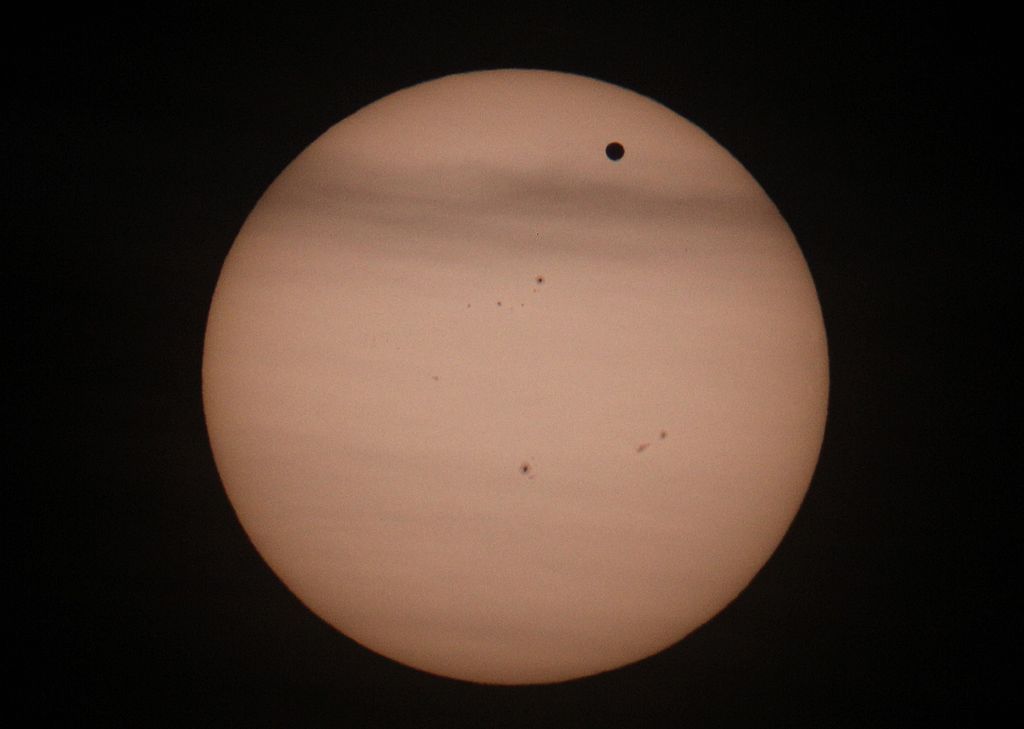Why there are so few images of Venus' surface


In the search for extraterrestrial life within the Earth's solar system, it's Venus, not Mars, that's emerging as the leading candidate.
On Monday, scientists revealed they detected traces of phosphine, a toxic gas that is produced by microorganisms on Earth, high in Venus' atmosphere. To be clear, there's only evidence of phosphine, not life itself. Theoretically, the gas could be forged by a chemical process scientists haven't seen before, but Clara Sousa-Silva, a molecular astrophysicist at the Massachusetts Institute of Technology and one of the study's authors, said life — likely microbes in the clouds — is the "most plausible explanation" for now.
On its face, the news is pretty surprising given that, as The Atlantic describes, Venus is a "planet-sized furnace" where surface temperatures hover around 860 degrees. There are very few photos of the planet's surface, save for a few taken in the 1980s by probes deployed by the Soviet Union. The images show a barren, rocky wasteland beneath an apocalyptic sky that has a yellow-ish, foggy tinge and certainly does not scream "life!" at first glance. Indeed, the probes that landed on Venus in the '80s only lasted for up to two hours. There have been no surface-landing missions to Earth's neighbor since 1985.
The Week
Escape your echo chamber. Get the facts behind the news, plus analysis from multiple perspectives.

Sign up for The Week's Free Newsletters
From our morning news briefing to a weekly Good News Newsletter, get the best of The Week delivered directly to your inbox.
From our morning news briefing to a weekly Good News Newsletter, get the best of The Week delivered directly to your inbox.
But there weren't always extreme conditions on the second planet from the Sun, The Atlantic notes. For billions of years, Venus was covered in oceans that would have been habitable, so scientists have held on to the idea that life might exist in the atmosphere, perhaps "the last remnant of a wrecked biosphere." Now, there's a possibility that's the case. Read more at The Atlantic and see images of Venus' surface here.
A free daily email with the biggest news stories of the day – and the best features from TheWeek.com
Tim is a staff writer at The Week and has contributed to Bedford and Bowery and The New York Transatlantic. He is a graduate of Occidental College and NYU's journalism school. Tim enjoys writing about baseball, Europe, and extinct megafauna. He lives in New York City.
-
 The Week’s big New Year’s Day quiz 2026
The Week’s big New Year’s Day quiz 2026Quiz of the Year How much do you remember about 2025’s headlines? Put yourself to the test with our bumper quiz of the year
-
 Is tanking ruining sports?
Is tanking ruining sports?Today's Big Question The NBA and the NFL want teams to compete to win. What happens if they decide not to?
-
 ‘Netflix needs to not just swallow HBO but also emulate it’
‘Netflix needs to not just swallow HBO but also emulate it’instant opinion Opinion, comment and editorials of the day
-
 Nobody seems surprised Wagner's Prigozhin died under suspicious circumstances
Nobody seems surprised Wagner's Prigozhin died under suspicious circumstancesSpeed Read
-
 Western mountain climbers allegedly left Pakistani porter to die on K2
Western mountain climbers allegedly left Pakistani porter to die on K2Speed Read
-
 'Circular saw blades' divide controversial Rio Grande buoys installed by Texas governor
'Circular saw blades' divide controversial Rio Grande buoys installed by Texas governorSpeed Read
-
 Los Angeles city workers stage 1-day walkout over labor conditions
Los Angeles city workers stage 1-day walkout over labor conditionsSpeed Read
-
 Mega Millions jackpot climbs to an estimated $1.55 billion
Mega Millions jackpot climbs to an estimated $1.55 billionSpeed Read
-
 Bangladesh dealing with worst dengue fever outbreak on record
Bangladesh dealing with worst dengue fever outbreak on recordSpeed Read
-
 Glacial outburst flooding in Juneau destroys homes
Glacial outburst flooding in Juneau destroys homesSpeed Read
-
 Scotland seeking 'monster hunters' to search for fabled Loch Ness creature
Scotland seeking 'monster hunters' to search for fabled Loch Ness creatureSpeed Read
